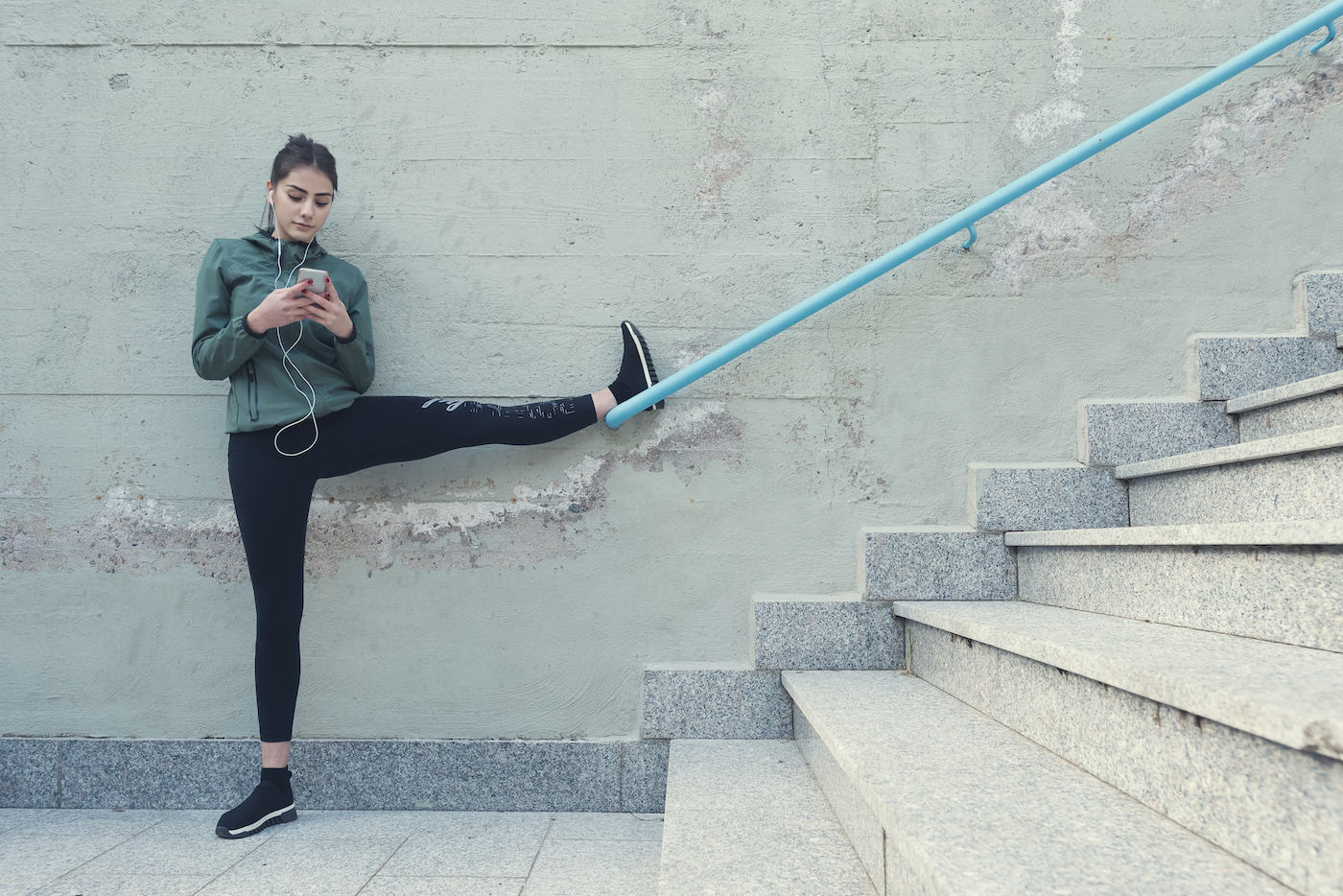
March 18, 2020 at 06:00PM by CWC
As the best study ever recently confirmed, walking is just as much of a legitimate workout as spinning or running. So long as you’re clocking 100 steps a minute, for at least 30 minutes a day, you can count those 3,000 steps as your daily recommended dose of moderate-intensity exercise. And just as stretching is an important part of any modality, doing stretches before walking is a great way to ensure you’re getting the most out of every step you take.
While this sort of workout might seem like a walk in the park (and, okay, might actually be a walk in the park), you’ll still want to prep your body the same way you would for more vigorous cardio. “When done correctly, stretching helps prepare the muscles for activity and reduces the risk of injury—if a muscle is too tight, it won’t be able to function as it should, which can lead to compensation and discomfort,” says Jeff Brannigan, PT, programming director at Stretch*d. He adds that everybody can benefit from cycling through a series of stretches before walking, because if you walk a lot, your muscles can become overworked and fatigued, which can lead to pain over time.
Here, pros share the best stretches to do before walking. And bonus? The more limber you are, the more spring you’ll have in your step… speed walking Olympics, here you come.
Why is it important to do stretches before walking?
ADVERTISEMENT
ADVERTISEMENTKate Spade Autumn/Winter Sale |
With every step you take, you’re putting force on your foot, up your leg, into your glutes and hip. “Remember the childhood song that goes: ‘The ankle bone’s connected to the shin bone, the shin bone’s connected to the knee bone’? It’s not wrong—everything is connected,” says Brannigan. Because of this, you’ll want to stretch the muscles that go all the way up your leg.
1. Foot: Our feet get the brunt of the impact from our daily lives, and yet we rarely give them the attention they deserve. “Not only is the foot an often neglected area, but it’s also your first point of contact with the ground when walking, so this is a good place to start,” says Brannigan. Your toes, heels, and ankles can all benefit from a stretch series.
2. Calf: Too-tight calves are a breeding ground for injuries, including shin splints, calf pulls, and even stress fractures, so you’ll want to keep them nice and loose to avoid injury, pre-walk or otherwise.
3. Quad: Your quads are made up of four muscles and account for the largest section of your leg. When the rectus femoris (which is part of both your quad and your hip flexor) is chronically tight, it can cause the misdirected tracking of your knee cap, and that can lead to pain and disfunction all the way down from your hip to your ankle.
4. Hamstring: “Tight hamstrings reduce the mobility of the pelvis, which can put pressure on the low back,” Samira Mustafaeva, a gymnast and founder of SM Stretching, previously told Well+Good. Aside from being uncomfy during your walk, this can also throw off your body’s alignment and posture, and lead to lower back pain.
5. Hip: If you spend most of your day sitting (which, let’s be honest, most of us do), chances are you’ve got tight hips. Stretching them out regularly—and cycling them through their full range of motion with Controlled Articular Rotation moves at least once every day—can help with their mobility.
Stretches before walking
In order to target all of the necessary muscles you’ll be working with your gait, Branningan suggests treating your body to these six stretches before you get to stepping. You’ll need a strap or a loop and a flat surface to do them properly.
1. Ankle angler: Sitting on a chair or bench, place one foot on the floor and place your other, working leg on top of it in a figure-four position, resting your ankle on top of your knee. Grab your working forefoot with your hand on the same side, and use your other hand to grasp your heel. Point your exercising foot by rotating it inward so that the bottom of your foot faces you.
2. Smooth walker: Lying on your back, place the ball of one foot into the loop of a rope or strap. Raise the looped leg so that it’s almost perpendicular to your body, and flex your foot by pointing your toes toward your chest. Hold for a few seconds, then relax by pointing your toes toward the ceiling, then lower your leg to the ground.
3. Hello hammies: Lying on your back, place the foot of the leg you’re exercising into the loop of your rope or strap and hold the strap in both hands. Lock your knee so that your leg is extended straight out, then lift your leg as high as you can using your glutes and hamstrings. Flex your foot, and climb up the rope hand-over-hand. Slowly return to the starting position.
4. Side sweeper: Lie on your back with your knee bent and foot planted, and place the foot of the opposite leg into a loop or strap. Wrap the rope or strap around the inside of your ankle so that the opposite ends are on the outside of your leg, and lock your knee. Extend your exercising leg out toward the side of your body, leading with your heel. Keep slight tension in the rope, then pull slowly back to start.
5. Crossover stretch: Lie on your back with both legs extended, holding a strap or loop both hands. Put the foot of your exercising leg into the strap, and lift your leg straight up until it’s perpendicular to your body while climbing up the rope, hand over hand. When your leg is fully extended, hold the ends of the strap in the opposite hand of the leg you’re working, and slightly bend your knee. Extend your other hand out to the other side of your body to stabilize. Keep slight tension in the rope as you bring your leg back up toward the sky, then slowly lower it to the ground.
ADVERTISEMENT
ADVERTISEMENTSports Direct Free Delivery on All Orders! |
6. Stretched Quad: Lie on your side with your knees bent at 90-degrees. Place the foot of your bottom leg inside the loop of a rope or strap, and grasp the other end of the rope with the same hand. Place your other hand around the ankle of your top foot, and contract your abdominal muscles to keep from rolling. Keep your knee bent and your leg parallel to the surface you’re lying on. Contract your hamstrings and glutes to move your upper leg back as far as you can, placing your hand on your ankle for assistance.
Want an equipment-free stretch series? Follow along with the video below:
Strengthening moves before walking
In addition to lengthening your muscles before you get moving, pros also suggest strengthening them. “Strengthening exercises are actually more important to perform in order to enhance your walking because strong muscles help to protect your joints,” says Ashley Speights O’Neill, PT, founder of The Phyt Collective. “While our bodies are made to withstand stress, joints can be susceptible to wear and tear, and building strength helps us to maintain healthy joints.” She suggests strengthening your glutes, lower abs, and quadriceps to maintain healthy joints during walking workouts. To do that on your own, follow along with the workouts below.
1. Glutes
2. Lower abs
3. Quads
Yoga has thousands of stretches, but pros say this one in particular loosens every muscle in your body. And if your spine is wining? Sleep like this for back decompression while you snooze.
Author Zoe Weiner | Well and Good
Selected by CWC

ADVERTISEMENT
ADVERTISEMENTUp to 30% off Gift Sets |







